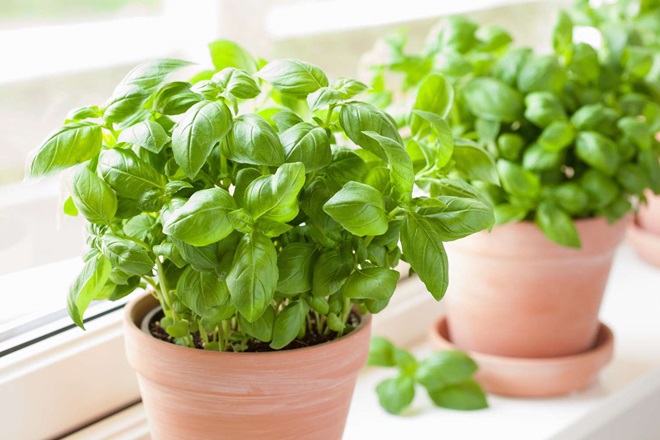
Basil is considered a spice plant with a distinct spicy flavor and strong aroma. When mature, basil can reach a height of 30-50 cm, with dark green leaves.
In cooking, basil is used to prepare many delicious dishes. Thanks to basil, dishes gain a rich and delightful flavor.
For our health, basil has many beneficial uses:
It supports the immune system, prolongs lifespan, and reduces the process of aging in the body.
Basil essential oil can aid in better digestive system function.
Basil in dishes or its essential oil can help the body prevent some harmful bacteria.
Additionally, basil has other benefits such as preventing tooth decay, being good for cardiovascular health, reducing blood sugar levels, increasing milk supply, and preventing depression.
In our guide on basil propagation, we emphasized growing basil outdoors because it thrives in sunny conditions. If you are growing and caring for basil indoors, please keep the following in mind:
Basil is a heat-loving plant, suitable for growing in hot weather. Basil grows well at temperatures of 25 - 35°C. The plant will stop growing and die if the temperature drops too low.
Basil needs to be grown in areas with 6 to 8 hours of sunlight per day. The soil must be moist and well-drained.
Sow seeds about 0.5 cm deep and space them 20 cm apart to allow for good root development and sunlight exposure. Additionally, you can utilize basil stems by removing some leaves and planting them in the soil.
Choose clean soil and avoid using chemical fertilizers, as basil grows very quickly and will also be affected by pollution if grown in contaminated soil.
Basil prefers humidity. If you live in a hot area, cover the soil with leaves or mesh to retain moisture.
When the basil plant has 10 to 15 leaves, trim the tops to prevent it from flowering too early and branching less, which results in fewer leaves. If flowers appear, remove them to prevent the plant from dropping leaves.
If the weather turns cold, harvest the basil early to prevent it from wilting.
Expose the basil plant to sunlight for at least 2-3 hours a day.
In reality, basil itself is quite resilient to diseases and pests. Therefore, when growing basil, one should avoid excessive use of chemical pesticides. Instead, natural and safer methods can be applied. Below, we will discuss common pests on basil plants and effective control measures.
Fungal Diseases: Typically, fungal diseases on basil can cause issues such as leaf rot, leaf spots, leaf burn, or root rot. Effective control includes regularly cleaning the soil, ensuring good drainage, minimizing the use of compost, and removing diseased plants.
Aphids: Aphids are a common pest on basil, causing leaf curling and stunted growth. To eliminate aphids, you can use cold water and directly spray it on the affected leaves. Additionally, keeping wasps in the garden can be an effective and safe method for controlling aphids.
You can start harvesting basil leaves when the plant is 15-20 cm tall and begins to branch.
Regularly harvest leaves to encourage the plant to grow and produce more young leaves. Basil leaves can be wrapped in newspaper and stored in the refrigerator for later use.
The above is a guide on how to take care of basil plant indoors for beginner gardeners. You can start applying these tips to enjoy this interesting herb!
Ý kiến bạn đọc
Những tin mới hơn
Những tin cũ hơn
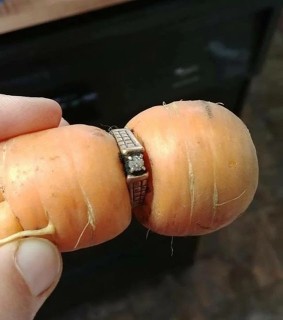 The most unique carrots in the world!
The most unique carrots in the world!
05.09.2024
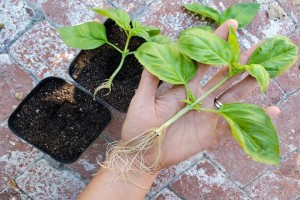 Guide to Propagating Basil Cuttings for Beginners
Guide to Propagating Basil Cuttings for Beginners
30.08.2024
 How to take care of basil plant indoors for Beginners
How to take care of basil plant indoors for Beginners
30.08.2024
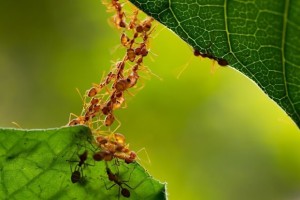 Interesting Facts About Ants
Interesting Facts About Ants
23.08.2024
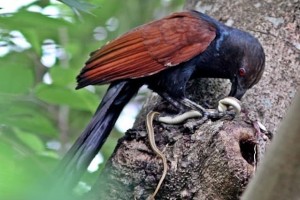 Coucal bird: Natural Enemy of Snakes
Coucal bird: Natural Enemy of Snakes
22.08.2024